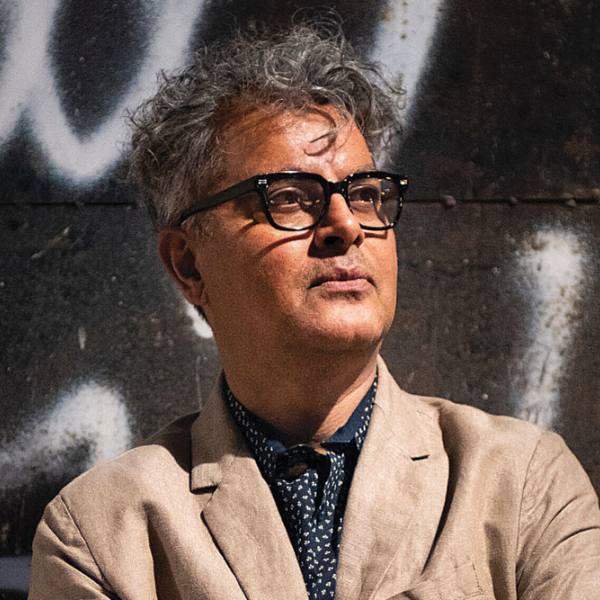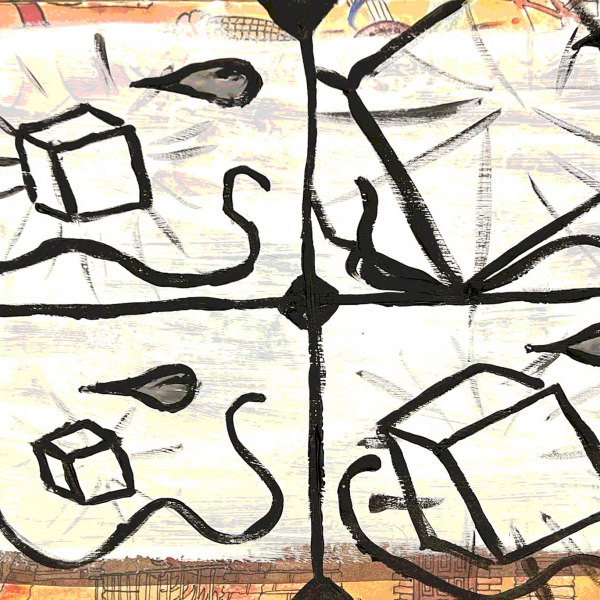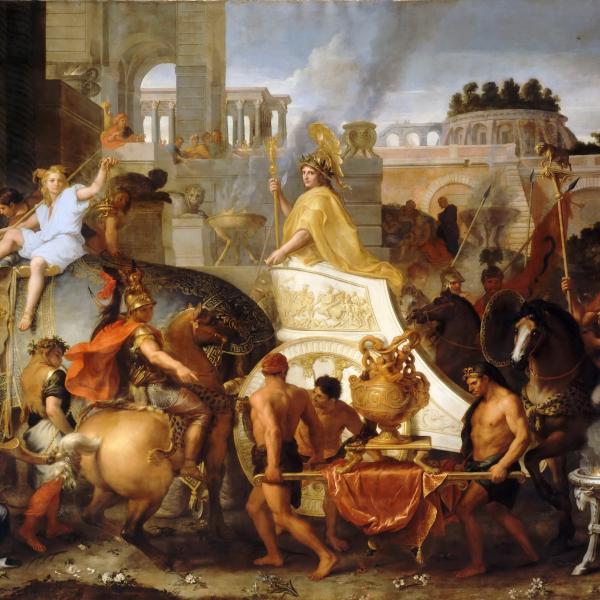In her eponymous television show, "Buffy the Vampire Slayer" is a college drop-out who couldn't find her place on campus. So, why do scholars find the series so thought provoking? Why is "Buffy studies" a thing? Wendy Love Anderson unpacks the common ideals behind the show and academia.
BUFFY: Are we heading anywhere near Wiesman Hall? I still need to get my I.D. card.
WILLOW: Oh, I got mine this morning. The lines are really long now, you should have gone early.
BUFFY: Well, I hope that I learn from this experience, and that I grow.
WILLOW: I'm being annoying, aren't I?
BUFFY: No, it's nice that you're excited.
WILLOW: It's just in high school, knowledge was pretty much frowned upon. You really had to work to learn anything. But here, the energy, the collective intelligence, it's like this force, this penetrating force, and I can just feel my mind opening up — you know? — and letting this place thrust into and spurt knowledge into... That sentence ended up in a different place than it started out in.
BUFFY: I'm with you, though, I'm all for spurty knowledge. It's just a little overwhelming.
— Buffy the Vampire Slayer, season 4, episode 1, “The Freshman”
Twenty years after its TV premiere, academia still loves Buffy the Vampire Slayer (BtVS). Theirs began as an unconventional, even forbidden love: Much like the romance between a vampire and a vampire slayer, it once seemed counterintuitive that a kitschy, teen-oriented TV drama featuring vampires and werewolves in Southern California would generate multiple essay collections and a peer-reviewed journal by the end of its fourth season. In 2003, as BtVS concluded its seventh and final season, NPR’s All Things Considered was shocked to discover that “some academics contend that the show’s lowbrow concept disguises unexpected substance” when they interviewed a series of what they characterized as “despondent Buffyologists” who intended — strangely enough — to persevere in their “Buffy studies” even after the show ended.
In 2017, NPR’s concern for “despondent Buffyologists” seems rather quaint. The show, along with its various spin-off properties and the ongoing creative output of BtVS writer/director Joss Whedon, continues to inspire scholarly analysis and publication. Slayage, the original BtVS journal, has sired a companion undergraduate journal and is planning an eighth biennial conference on “the Whedonverses” in summer 2018. And “Buffy studies” is sometimes credited with paving the way for uncontroversial academic analysis of more recent (and more prestigious) television properties such as Mad Men and Breaking Bad, while the popular media has moved on to manufactured concern about academics studying Kanye West.
What remains puzzling is why academics embraced a TV show even after it displayed so little return interest in academia. BtVS spent its first three seasons set in and around Sunnydale High School, where teachers were either villains, allies or disposable vampire fodder, depending on the week’s plotline. However, it did have an intellectually minded hero of sorts: Rupert Giles, the ostensible school librarian, who revealed himself in the pilot episode as Buffy’s custodian/“Watcher” and became lead researcher and quasi-parental mentor to Buffy and her friends. Although there was a running gag in the first season about how often Giles needed Buffy to rescue him, the show consistently emphasized the importance of acquiring and applying esoteric knowledge — from ancient codices as well as online databases — in order to more effectively fight the forces of evil. The late David Lavery, one of the founding fathers of Buffy studies, told NPR back in 2003 that academics loved BtVS because “the primal scene of the show was a bunch of young people gathered around a middle-aged librarian in a library looking things up.”
But BtVS’ third season ended with Giles literally blowing up his library as the other main characters graduated from high school and — despite admissions offers to an array of prestigious universities — mostly opted to remain in Sunnydale and attend its imaginary UC branch campus. This set the stage for a fourth season in which the university briefly became the source of both natural and supernatural conflict, as Buffy struggled with overpriced textbooks, overenrolled classes, bullying professors and a (literally) demonic roommate. In short order, Buffy and Willow’s “world-renowned” Intro to Psychology professor turned out to be the secret head of a government-funded demon research initiative headquartered underneath the university, running another even more secret government project to build a cyborg demon, and drugging her squad of hunky psychology TAs/ paramilitary operatives, including Buffy’s new romantic interest.
Unfortunately, it took only half a season for the show to lose interest in its putative higher-ed setting: Buffy’s professor was killed by her own demonic creation, and her research was taken over by military officers rather than co-PIs. Viewers never found out exactly what happened to Buffy and Willow’s Intro to Psychology class, although a season later, Willow indignantly told her girlfriend that she “took Psych 101 — I mean, I took it from an evil government scientist who was skewered by her Frankenstein-like creation before the final, but I know what a Freudian slip is.” In the same fifth-season episode, not long after her mother’s sudden death, Buffy finally dropped out of college, with a brief scene giving academic viewers their first and only glimpse of a sympathetic UC-Sunnydale professor: She complimented him on teaching her to appreciate poetry and told him that “hopefully I’ll be back next semester,” but she never returned. Although Sunnydale itself sunk into the Hellmouth at the end of season seven, nobody graduated. The university was simply not that important to the show, nor was it necessary to the characters’ development.
So how can academics relate to a show that so clearly rejected institutional academia? Quite easily, it turns out. They can observe, along with cinema and media studies scholars Michael Zyrd and Brian Wall, that “in Buffy’s fourth season, the institutional quality of villainy is even more pointed, and achieves much greater scale and modern substance in the Initiative, significantly housed under the University, the next stage after high school in ‘knowledge production.’” (“Vampire Dialectics: Knowledge, Institutions and Labor”). They can join education professor Toby Daspit in characterizing Buffy’s lackluster university experience as a postmodern effort to discredit a hierarchical model of education in favor of “positing possibilities for knowledge construction that reject modernist attempts to channel and control learning” (“Buffy Goes to College, Adam Murders to Dissect: Education and Knowledge in Postmodernity”). They can echo literature and education specialist Christine Jarvis when she identifies the show’s characters as self-directed, relational learners who chafe at inequalities between students and teachers, especially at UC-Sunnydale, where “teaching takes place in impersonal lecture theatres [and] professors are unapproachable” (“Real Stakeholder Education?: Lifelong Education in the Buffyverse”). They can even emulate Melissa C. Johnson’s first-year seminar in Focused Inquiry, in which she uses Buffy’s experience to encourage students to reflect on their own university’s comparatively generous support systems ( “College Isn’t Just Job Training and Parties: Stimulating Critical Thinking With ‘The Freshman’”).
These otherwise disparate scholarly perspectives unite in choosing to see BtVS’s dismal portrayal of academia as a conscious social critique that satirizes the ways in which university infrastructure impedes the “spurty” flow of knowledge. The absurdities of UC-Sunnydale and its gradual disappearance from BtVS are the means by which Buffy and her friends emerge as mature, independent thinkers and learners. Read through an academic lens, all seven seasons of BtVS are actually paying allegiance to an academic ideal: research that changes the world. A lot.




